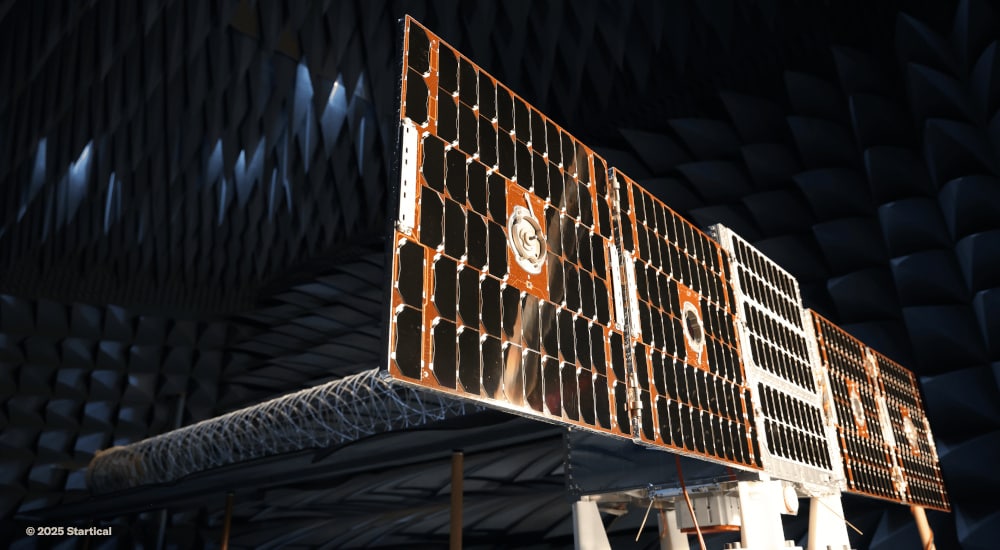Startical trusts Alén Space’s SDR technology in its IOD-2 satellite
February 11, 2025

Startical, a company backed by Indra and ENAIRE, officially unveiled its IOD-2 (In-Orbit Demonstrator-2) satellite this month, featuring SDR technology from Alén Space. The project aims to demonstrate the feasibility of a solution to optimize air traffic management from space.
The satellite incorporates multiple subsystems with software-defined radio (SDR) solutions provided by Alén Space through its TREVO product, applied to VHF, ADS-B, and feeder link payloads. For ADS-B and feeder link, Alén Space was also responsible for developing the specific application. The mission engineering and satellite payload were developed by Indra, with support from ENAIRE.
TREVO is a flight-proven SDR solution designed to adapt to various high-performance applications in space. Its modular and configurable capabilities facilitate integration with different systems and mission types.
Future constellation with over 200 satellites
The IOD-2 satellite, part of the ECHOES project, is currently undergoing testing at the facilities of the Spanish National Institute of Aerospace Technology (INTA). It paves the way for the Startical Constellation, which aims to deploy more than 200 satellites in low Earth orbit (LEO) in the future. This infrastructure will provide advanced surveillance and communication services for air traffic.
Equipped with a large VHF antenna and other aircraft position monitoring systems (ADS-B), Startical’s satellites will enhance communications, particularly in areas without coverage and remote regions.
Currently, when an aircraft crosses oceanic areas, it may enter zones without real-time voice communication coverage between pilots and controllers. As a result, aircrafts must maintain high separation levels to ensure safety, reducing airspace efficiency and limiting the capacity to manage high traffic volumes.
Startical’s global coverage proposal enables a much more efficient and secure air traffic management system, particularly in contingency situations such as route changes due to storms or medical emergencies on board. Additionally, it contributes to a more sustainable aviation industry by allowing aircrafts to choose optimal routes, thereby reducing fuel consumption.
Launch scheduled for mid-2025
The IOD-2 satellite has undergone rigorous electromagnetic compatibility, vibration, and functionality tests at INTA to ensure its operational capability in orbit. Its launch is scheduled for mid-2025.
With its involvement in this mission, Alén Space strengthens its position as a supplier of advanced technology for the space sector, in a project that once again showcases the capability of the Spanish industry to develop innovative solutions for critical global applications.
Featured image: Startical
